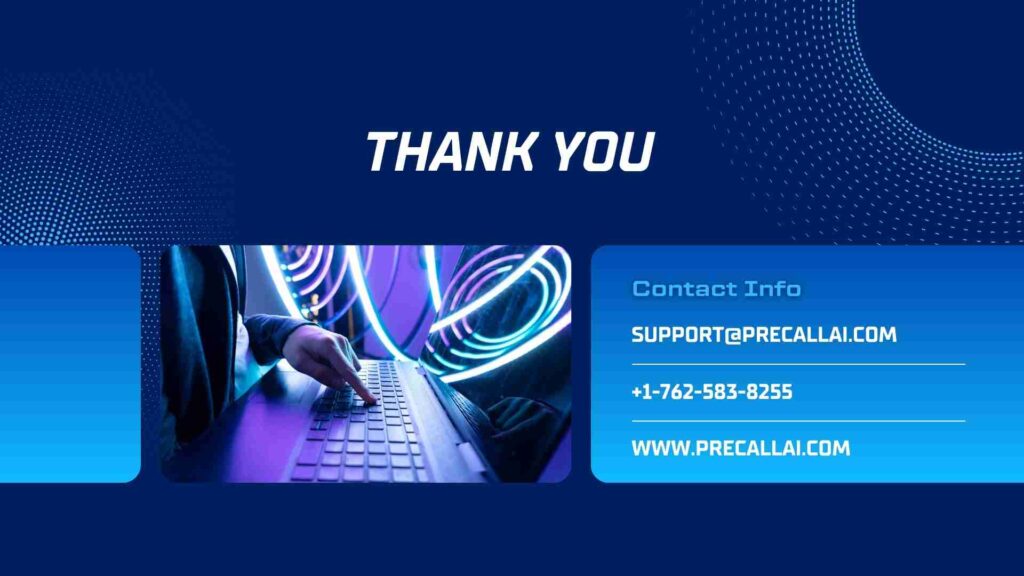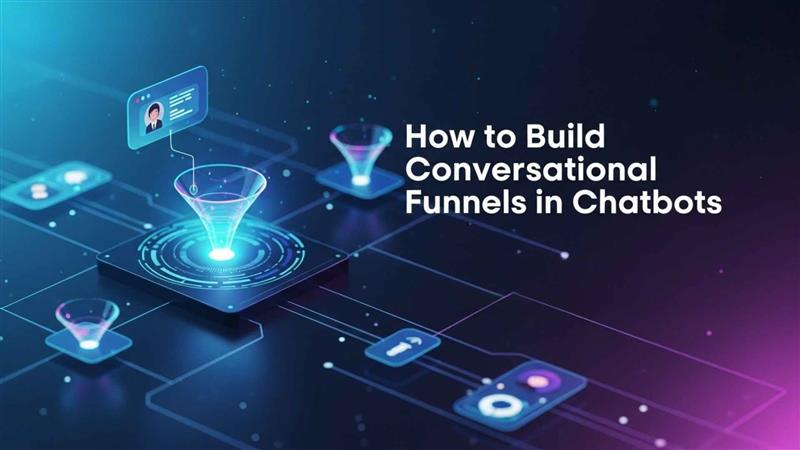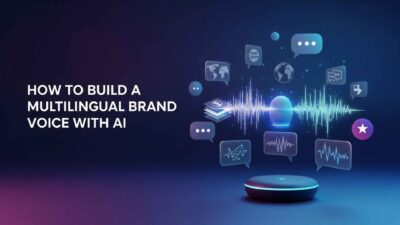Introduction
Table of Contents
TL;DRTraditional sales funnels feel mechanical and impersonal to modern customers. Static web forms create friction that drives potential buyers away. Conversational funnels in chatbots and messaging apps revolutionize how businesses guide prospects toward conversion. These dynamic interactions adapt to individual responses in real-time. Customers feel heard rather than processed through rigid predetermined paths. Conversion rates improve by 25-40% when companies implement conversational approaches. This guide provides a complete framework for building high-performing chatbot funnels.
Understanding Conversational Funnel Fundamentals
Conversational funnels mimic natural human sales discussions through automated technology. The chatbot asks questions and adjusts its approach based on responses. Conversational funnels in chatbots and messaging apps create personalized customer journeys. Each interaction branches dynamically rather than following linear predetermined sequences. The technology qualifies leads while simultaneously building rapport and trust. Smart design makes the experience feel helpful rather than pushy.
Traditional Funnels Versus Conversational Approaches
Standard web funnels push visitors through awareness, interest, decision, and action stages rigidly. Drop-off rates reach 70-90% as prospects abandon forms halfway through. Conversational funnels engage prospects through dialogue instead of demanding form completion. Chatbots gather information gradually across multiple touchpoints naturally. The experience feels like consulting an expert rather than filling out paperwork. Completion rates double or triple compared to traditional static approaches.
Core Components of Effective Conversational Funnels
Intent recognition determines what the prospect actually wants from the interaction. Context maintenance remembers previous statements throughout the entire conversation. Conditional logic branches the dialogue based on specific responses given. Personalization elements reference prospect data to create relevant experiences. Integration touchpoints connect with CRM systems and marketing automation platforms. Progress indicators show prospects how close they are to resolution.
Mapping Your Customer Journey
Successful conversational funnels start with deep understanding of customer decision processes. You must identify every question prospects ask before making purchase decisions. Conversational funnels in chatbots and messaging apps should mirror natural buying psychology. Document the emotional states customers experience at each funnel stage. Map common objections that arise during typical sales conversations. Your chatbot addresses concerns proactively rather than reactively.
Identifying Key Decision Points
Analyze sales call recordings to extract common customer questions. Review support tickets to understand confusion points in your current process. Survey recent buyers about what information they needed before purchasing. Interview sales teams about recurring conversation patterns they encounter. Create a decision tree showing how different answers lead to outcomes. These insights form the backbone of your conversational funnel architecture.
Creating Buyer Personas for Chatbot Interactions
Different customer segments require distinct conversational approaches and messaging. Technical buyers need detailed specifications and integration information immediately. Economic buyers focus on ROI calculations and cost justification data. End users care about ease of use and day-to-day practical benefits. Your conversational funnel adapts tone and content based on persona indicators. Early questions identify which persona type you’re engaging quickly.
Designing the Conversation Flow
Natural dialogue follows patterns humans instinctively recognize and appreciate. Opening messages establish context and set expectations for the interaction. Conversational funnels in chatbots and messaging apps must feel genuinely helpful. Middle sequences gather qualification information through strategic questioning techniques. Closing sequences guide prospects toward specific conversion actions confidently. Each transition feels logical rather than abrupt or forced.
Crafting Engaging Opening Messages
The first message determines whether prospects engage or immediately close the window. Avoid generic “How can I help you?” openers that feel robotic. Reference the page context or previous behavior to demonstrate awareness. Ask specific questions that require more than yes/no responses. Create curiosity about how the conversation might benefit them. Personality in the opening sets the tone for everything that follows.
Structuring the Middle Conversation
Qualify prospects through questions that feel natural rather than interrogative. Use multiple-choice options to reduce friction and speed progression. Open-ended questions gather rich information when appropriate for the context. Acknowledge and validate responses to maintain engagement and build rapport. Provide value through insights or tips between qualification questions. The prospect should feel educated rather than merely interrogated.
Creating Compelling Conversion Moments
The ask should feel like a natural next step rather than pressure. Explain clearly what happens after the prospect takes the desired action. Remove uncertainty by describing the immediate next steps in detail. Offer multiple conversion options when prospects might have different preferences. Make the action incredibly easy with minimal required information initially. Celebrate the decision to reinforce positive feelings about moving forward.
Building Branching Logic
Simple linear conversations feel stilted and fail to address individual needs. Branching creates personalized experiences that adapt to each unique prospect. Conversational funnels in chatbots and messaging apps rely on sophisticated conditional routing. Different answers trigger entirely different conversation paths strategically. The technology delivers the right message to the right person automatically. Complex logic trees operate invisibly behind friendly conversational interfaces.
Conditional Response Patterns
If-then statements create basic branching based on specific answer choices. Nested conditions handle complex scenarios requiring multiple criteria simultaneously. Variable storage remembers answers for use later in the conversation. Score-based routing assigns points to answers and branches based on totals. Keyword detection identifies specific terms that trigger specialized conversation paths. These mechanisms work together to create seemingly intelligent dialogue.
Handling Edge Cases and Unexpected Responses
Prospects often provide answers your initial design didn’t anticipate completely. Fallback responses acknowledge the input while gently guiding back on track. Clarification questions help the bot understand ambiguous or unclear responses. Graceful degradation to human handoff occurs when the bot reaches limitations. Error messages feel conversational rather than technical or robotic. Recovery pathways bring prospects back into productive dialogue after confusion.
Personalization Techniques
Generic conversations fail to create the connection required for conversion. Personalization makes each prospect feel uniquely understood and valued. Conversational funnels in chatbots and messaging apps leverage data for customization. The bot references names, companies, and previous interactions naturally. Product recommendations match stated needs and preferences precisely. Timing adapts based on engagement patterns and previous behavior.
Using Existing Customer Data
CRM integration provides purchase history and previous interaction records immediately. Website behavior tracking reveals pages visited and content consumed. Email engagement data shows which messages generated interest previously. Social media activity indicates interests and preferences outside your website. Demographics and firmographics enable industry-specific conversation tailoring. This data creates context that makes conversations relevant and valuable.
Dynamic Content Insertion
Variables populate messages with prospect-specific information automatically throughout conversations. Product recommendations change based on budget ranges mentioned earlier. Case studies feature companies similar to the prospect’s organization. Pricing information reflects the package configuration discussed in conversation. Next available appointment slots display based on prospect’s stated timezone. Dynamic elements create the illusion of human customization at scale.
Optimizing for Different Messaging Platforms
Facebook Messenger reaches billions of users in their preferred communication channel. WhatsApp Business provides secure conversations with global audiences effectively. SMS chatbots work on any mobile device without app downloads. Website chat intercepts visitors at critical decision moments. Conversational funnels in chatbots and messaging apps adapt to platform constraints. Each channel requires optimization for its unique user expectations.
Platform-Specific Design Considerations
Facebook Messenger supports rich media, quick replies, and persistent menus. WhatsApp emphasizes text communication with limited formatting options available. SMS requires extreme brevity due to character limits and costs. Website chat allows longer messages and embedded multimedia elements. Voice platforms like Alexa need entirely different conversational structures. Design your core funnel logic once and adapt presentation layers.
Cross-Platform Conversation Continuity
Prospects might start conversations on one platform and continue elsewhere. Unified customer profiles maintain context across all communication channels. Conversation history syncs so prospects never repeat information already provided. Platform-specific identifiers link to master customer records automatically. The experience feels seamless regardless of where interactions occur. Omnichannel strategies maximize conversion by meeting prospects where they are.
Qualifying Leads Effectively
Not every prospect represents a valuable sales opportunity worth pursuing. Qualification separates serious buyers from casual browsers efficiently. Conversational funnels in chatbots and messaging apps score leads automatically. Strategic questions reveal budget, authority, need, and timeline indicators. The bot routes qualified prospects to sales immediately for follow-up. Unqualified leads receive nurturing sequences until they become sales-ready.
BANT Framework Implementation
Budget questions determine whether prospects can afford your solution realistically. Authority identification confirms you’re speaking with actual decision-makers or influencers. Need assessment validates that genuine problems exist requiring your solution. Timeline qualification reveals urgency and likely purchase timeframes. Conversational approaches gather BANT information naturally without feeling like interrogation. Scoring algorithms weigh responses to calculate lead quality automatically.
Progressive Profiling Strategies
Initial conversations gather only essential information required for first steps. Subsequent interactions collect additional details incrementally over time. The approach respects prospect attention while building comprehensive profiles. Each conversation provides value in exchange for information shared. Database fields populate gradually across multiple touchpoints strategically. Complete profiles emerge without overwhelming prospects with lengthy forms.
Integration with Marketing Automation
Conversational data enriches marketing automation workflows significantly when connected properly. Chatbot interactions trigger email sequences based on conversation outcomes. Conversational funnels in chatbots and messaging apps feed CRM systems automatically. Lead scores update in real-time as chatbot conversations reveal information. Retargeting audiences segment based on specific conversation paths taken. The technology stack works together to maximize conversion opportunities.
CRM Synchronization
Contact creation happens automatically when new prospects engage through chatbots. Conversation transcripts attach to contact records for sales team context. Custom fields populate with qualification information gathered during conversations. Deal stages advance based on conversion actions taken through chat. Activity logging tracks every interaction for complete customer journey visibility. Sales teams access rich context before making outreach calls.
Marketing Platform Connections
Email marketing platforms receive conversation data for segmentation and personalization. Marketing automation tools trigger workflows based on chatbot interaction outcomes. Analytics platforms track conversation funnel performance alongside other marketing channels. Advertising platforms create custom audiences from chatbot engagement data. Calendar systems schedule appointments booked through conversational interfaces. The integrated ecosystem multiplies the value of every conversation.
Creating Compelling Call-to-Actions
Weak CTAs doom even brilliantly designed conversational funnels to poor performance. Strong CTAs create urgency while reducing friction and uncertainty. Conversational funnels in chatbots and messaging apps need clear next steps. Action-oriented language tells prospects exactly what to do immediately. Benefit-focused messaging explains why taking action serves their interests. Multiple CTA options accommodate different prospect preferences and readiness levels.
CTA Placement and Timing
Early CTAs capture high-intent prospects ready to convert immediately. Mid-funnel CTAs appear after value delivery establishes credibility and trust. Exit intent CTAs make last-ditch conversion attempts before prospects leave. Time-based CTAs trigger after specific engagement duration thresholds pass. Behavior-based CTAs respond to actions indicating heightened interest levels. Strategic timing maximizes conversion without feeling pushy or desperate.
Testing CTA Variations
A/B testing compares different CTA wording to identify top performers. Button colors and styling variations impact click-through rates measurably. Placement experiments determine optimal positioning within conversation flows. Incentive testing evaluates whether discounts or bonuses improve conversion. Urgency element testing measures the impact of limited-time language. Continuous optimization compounds improvements over time significantly.
Measuring Funnel Performance
What you measure determines what you can improve systematically. Conversation completion rates show how many prospects reach the end. Conversational funnels in chatbots and messaging apps generate rich analytics data. Drop-off points reveal where prospects abandon conversations most frequently. Response time metrics indicate how quickly your chatbot engages visitors. Conversion attribution shows which funnel variations drive actual business results.
Key Performance Indicators
Engagement rate measures what percentage of visitors interact with your chatbot. Average conversation length indicates how deeply prospects engage with content. Qualification rate shows how many engaged prospects meet your criteria. Conversion rate tracks the percentage who take desired actions ultimately. Cost per acquisition calculates the efficiency of your chatbot funnel. Customer lifetime value measures the long-term impact of chatbot-acquired customers.
Analytics Platform Integration
Google Analytics tracks chatbot interactions as events within your website. Dedicated chatbot analytics platforms provide conversation-specific insights deeply. Heatmapping tools visualize where prospects click within rich media messages. Session recording captures actual conversation flows for qualitative analysis. Dashboard integrations display chatbot metrics alongside other marketing channels. Comprehensive measurement enables data-driven optimization decisions confidently.
Continuous Optimization Strategies
Launch represents the beginning of improvement rather than the endpoint. Initial performance establishes baselines for measuring progress over time. Conversational funnels in chatbots and messaging apps require ongoing refinement. Customer feedback reveals friction points not obvious in analytics data. Competitor analysis identifies emerging best practices worth testing yourself. Market changes demand funnel adjustments to maintain relevance and effectiveness.
A/B Testing Methodologies
Split traffic between conversation variations to determine superior performers. Test single elements individually to isolate what drives improvement. Statistical significance calculations prevent premature conclusions from limited data. Winner promotion happens automatically when platforms detect clear performance differences. Continuous testing culture ensures constant improvement rather than stagnation. Small incremental gains compound into major competitive advantages long-term.
Feedback Collection and Analysis
Post-conversation surveys gather qualitative insights about user experience. Sentiment analysis evaluates emotional tone throughout conversation transcripts. Support ticket analysis identifies confusion or frustration points needing fixes. Sales team feedback reveals what information prospects needed but didn’t receive. User session recordings show actual behavior versus intended design. Multiple feedback sources paint complete pictures of performance reality.
Handling Objections Conversationally
Prospects raise objections that must be addressed before conversion happens. Anticipating common objections allows proactive handling within conversation flows. Conversational funnels in chatbots and messaging apps overcome resistance naturally. Empathetic acknowledgment validates concerns rather than dismissing them defensively. Evidence-based responses provide proof points that address doubts credibly. Alternative framing helps prospects see situations from different perspectives.
Common Objection Patterns
Price objections signal value perception gaps requiring justification and context. Timing objections indicate urgency issues or competing priority concerns. Authority objections reveal decision-making complexity requiring stakeholder involvement. Feature objections highlight gaps between expectations and perceived capabilities. Competition objections suggest prospects are evaluating alternatives simultaneously. Your chatbot recognizes these patterns and responds appropriately automatically.
Response Frameworks
Feel-Felt-Found technique acknowledges emotions and provides social proof naturally. Question responses uncover the real concern beneath surface objections. Story-based answers provide relatable scenarios demonstrating successful outcomes. Data-driven rebuttals leverage statistics and research to build credibility. Comparison frameworks position your solution against alternatives favorably. Multiple response strategies ensure effective handling of diverse objections.
Scaling Conversational Funnels
Successful pilots require expansion strategies to capture full potential value. Adding conversation languages reaches global audiences previously inaccessible. Conversational funnels in chatbots and messaging apps scale efficiently across products. Template approaches allow rapid deployment of proven funnel structures. Team collaboration enables subject matter experts to contribute content easily. Infrastructure planning ensures performance remains strong under increased load.
Multi-Product Funnel Architecture
Shared qualification logic reduces redundant development across product lines. Product-specific branches deliver customized information after initial universal qualification. Cross-sell pathways suggest relevant additional products during conversations naturally. Unified analytics aggregate performance across all product funnels comprehensively. Centralized management interfaces simplify oversight of multiple conversation flows. Modular design enables rapid creation of new product funnels.
International Expansion Considerations
Translation quality determines whether funnels feel native or obviously foreign. Cultural adaptation goes beyond translation to respect local communication norms. Regional compliance requirements affect what questions you can ask legally. Timezone handling ensures appropriate timing for human handoff conversations. Currency and unit conversions display information in locally relevant formats. Market-specific examples and case studies increase relevance and credibility.
Advanced Techniques and Innovations
Artificial intelligence capabilities expand conversational possibilities beyond scripted pathways. Natural language generation creates unique responses rather than templated messages. Conversational funnels in chatbots and messaging apps leverage machine learning continuously. Sentiment detection adapts tone based on prospect emotional states. Predictive analytics anticipate needs before prospects explicitly state them. Voice integration enables conversations beyond text-based messaging platforms.
AI-Powered Personalization
Machine learning models recommend optimal conversation paths for each prospect. Predictive lead scoring identifies high-value opportunities for priority handling. Content recommendation engines suggest relevant resources during conversations dynamically. Automated experimentation tests variations without manual setup or monitoring. Anomaly detection identifies unusual patterns requiring human attention immediately. AI augmentation makes chatbots smarter with every single interaction.
Voice and Multimodal Experiences
Voice-enabled chatbots allow hands-free interaction in appropriate contexts. Visual elements complement text conversations with images and videos. Interactive elements like calendars and calculators embed within conversation flows. Video chat escalation connects prospects with human agents seamlessly. Augmented reality features demonstrate products virtually during conversations. Future innovations will blur lines between conversational and visual interfaces.
Compliance and Privacy Considerations
Data collection through chatbots creates regulatory obligations requiring careful attention. Privacy policies must disclose what information you collect and why. Conversational funnels in chatbots and messaging apps need consent mechanisms built-in. GDPR compliance requires explicit permission for European prospect data. CCPA compliance gives California residents control over their information. Industry-specific regulations impose additional requirements for healthcare and finance.
Consent Management
Clear disclosure statements explain chatbot data collection practices upfront. Opt-in checkboxes confirm explicit agreement to terms before conversations begin. Granular permission controls let prospects choose what data they share. Easy opt-out mechanisms honor prospect preferences for communication cessation. Audit trails document consent for regulatory compliance and legal protection. Transparent practices build trust that improves engagement and conversion.
Data Security Measures
Encryption protects conversation data during transmission and storage. Access controls limit who can view sensitive prospect information. Regular security audits identify and address potential vulnerabilities proactively. Breach notification procedures ensure rapid response if incidents occur. Third-party vendor assessments verify partner security standards meet requirements. Security investments protect both prospects and your business reputation.
Frequently Asked Questions About Conversational Funnels
💬 Effectiveness and Benefits
What makes conversational funnels more effective than traditional forms?
Conversational funnels in chatbots and messaging apps feel natural and engaging. Prospects share information gradually instead of facing long forms upfront. The dialogue format maintains attention and reduces form abandonment. Real-time feedback prevents user errors, while personalized experiences keep interactions relevant. As a result, completion rates often double or triple compared to traditional forms
⏱️ Funnel Length and Optimization
How long should a conversational funnel be?
The optimal length depends on product complexity and price point. Simple, low-cost products may need only 3–5 exchanges, while enterprise offerings might require 15–20 interactions to qualify leads. The key is to deliver value throughout—not just collect data. Every message should move the user closer to conversion. Testing different funnel lengths helps identify your best-performing structure.
🏢 B2B and Complex Sales Applications
Can conversational funnels work for complex B2B sales?
Yes — conversational funnels are highly effective for longer B2B sales cycles. Early interactions help qualify serious leads, saving sales teams time. Multiple touchpoints naturally build relationships over extended decision periods. Seamless CRM integration ensures smooth handoffs between chatbots and sales reps. Many enterprises report significant pipeline growth after adopting conversational qualification.
🌐 Platform Selection
What platforms work best for conversational funnels?
Different platforms suit different audiences and goals:
- Website chat engages visitors already exploring your site.
- Facebook Messenger offers access to vast social audiences.
- WhatsApp provides global reach with high engagement.
- SMS ensures universal accessibility without app installs.
- Email chatbots create interactive conversations inside emails.
The best choice depends on where your audience spends time.
💵 Costs and ROI
How much does it cost to build conversational funnels?
Costs vary based on complexity:
- DIY tools: $50–$500/month for basic setups
- Custom development: $5,000–$50,000
- Enterprise platforms: $1,000–$5,000/month + setup fees
The investment typically pays for itself within 3–6 months due to higher conversion rates. Start with one high-impact funnel before scaling.
🧩 Technical Skills and Setup
Do I need coding skills to create conversational funnels?
No coding is required for most modern no-code chatbot builders. These tools feature drag-and-drop interfaces for creating branching logic. Pre-built templates make customization easy. For advanced integrations, technical partners or vendor support can assist. Basic digital marketing skills are more important than programming knowledge.
🤖 Humanizing the Conversation
How do I prevent chatbot conversations from feeling robotic?
Keep messages conversational and natural — write like you speak. Use contractions, friendly tone, and light humor when appropriate. Vary message length and structure for flow. Show empathy and acknowledgment before asking more questions. Be transparent when the bot can’t help. An authentic, helpful tone matters more than flawless grammar.
📊 Key Performance Metrics
What metrics indicate a successful conversational funnel?
Track these core indicators to measure success:
- Engagement Rate: % of visitors who interact with the bot
- Completion Rate: % who finish the funnel
- Qualification Rate: % of qualified leads
- Conversion Rate: % who take the desired action
- Customer Acquisition Cost (CAC): efficiency compared to other channels
- Revenue Attribution: total business impact from funnel-driven leads
Together, these metrics provide a clear picture of ROI and funnel performance.
Read More:-Best Chatbot Builder to Automate Business Payments
Conclusion

Conversational funnels in chatbots and messaging apps transform how businesses generate leads. Static forms create friction that drives prospects away before conversion. Natural dialogue engages prospects while gathering qualification information systematically. Personalization makes each interaction feel uniquely relevant and valuable. Automation scales personalized experiences beyond what human teams can deliver. The results speak clearly through improved conversion rates and customer satisfaction.
Building effective conversational funnels requires understanding customer psychology deeply. You must map the natural decision journey prospects take. Design conversation flows that mirror helpful consultative selling approaches. Implement branching logic that adapts to individual responses dynamically. Integrate with existing marketing and sales technology stacks seamlessly. Measure performance rigorously to enable continuous optimization over time.
Start with a single high-impact use case rather than trying everything simultaneously. Choose a conversion point where you currently lose many interested prospects. Design a simple funnel that addresses the core decision factors. Launch quickly and improve based on real performance data gathered. Expand to additional use cases after proving value with initial success. Momentum builds as results demonstrate the power of conversational approaches.
The technology continues evolving with artificial intelligence advances accelerating capabilities. Natural language understanding improves monthly with better training data. Personalization engines grow more sophisticated at predicting prospect needs. Voice interfaces will expand conversational opportunities beyond text platforms. Your early investment positions you to leverage these innovations first. Competitors who wait will struggle to catch up later.
Begin your conversational funnel journey by selecting the right platform. Evaluate options based on your technical capabilities and budget constraints. Design your first funnel addressing a clear specific business goal. Test thoroughly before launching to ensure smooth prospect experiences. Monitor performance closely and iterate based on data and feedback. Your conversational future starts with a single conversation today.





